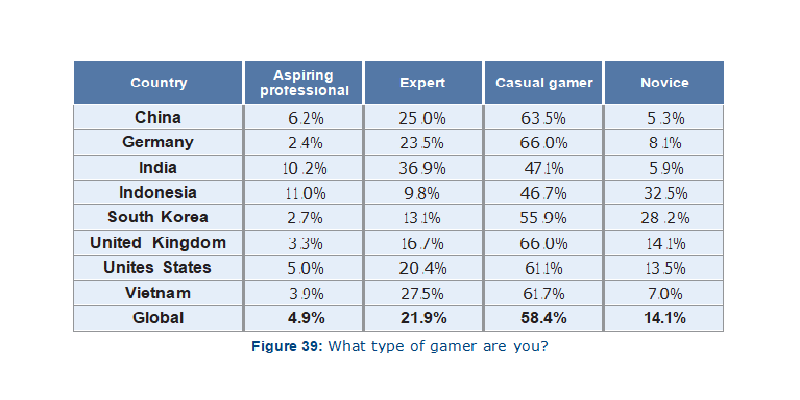
The desire to stay connected and entertained while being stuck at home during the pandemic has driven online gaming popularity. “State of Online Gaming 2021” report commissioned by Limelight Networks about the global gaming preferences and habits states that playing video games have risen to a new level, with an increase of 14 per cent over last year in consumers’ play time. In fact, gamers across the globe are playing video games on an average of eight hours and 27 minutes each week .
“Video gaming has evolved into a social platform. Gamers want interactive, high performance, disruption-free experiences that allow them to connect with others and play longer. This evolution is putting pressure on gaming companies to match this demand and requires edge-based content and compute to deliver high-quality gaming environments to users across the globe,” said Limelight Networks vice president Nigel Burmeister.
The report is based on responses from 4,000 consumers in China, Germany, India, Indonesia, South Korea, the United Kingdom, the United States and Vietnam, ages 18 years and older who play video games. Here are the key highlights of the report:
- The spikes in gaming over the last year are driven by gamers’ desire for social connections. 53 per cent say that they’ve made new friends through online games in the past year and one in three (36 per cent) say that the ability to interact with other players is extremely important.
- Opportunities for interactivity and social engagement are likely drivers for video game adoption with the majority of 64 per cent of global gamers saying that they started playing video games in the past year.
- Gamers aged 36-45 years spend the most time playing at 9.3 hours a week. Those aged 46-60 spend the least amount of time which is 7.9 hours in playing. These numbers are significantly up in 2020 by 15 per cent and 20 per cent respectively. Gamers in China spend the most time playing, at an average of over 12 hours a week. South Korea had the lowest weekly average at 5.88 hours.China and Indonesia had the most gamers (18 per cent and 14 per cent respectively) who play for more than 20 hours each week.
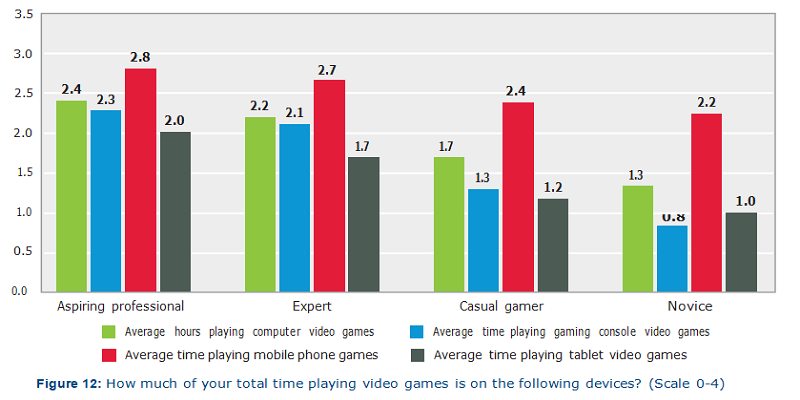
- There are no significant differences between genders in playing time, but compared to last year, female gamers’ play increased by 17 per cent, and males’ play jumped up by 24 per cent. Male gamers under 45 years play more than female gamers, however females over the age of 46 play more than males .
- 33 per cent gamers identifying as aspiring professionals or experts play the most per week, especially those who report for more than 20 hours play time per week, while most casual gamers and novices play less than seven hours per week .
- The longest playing session times range from 3.6 hours in South Korea to almost six hours in the US. One in 10 have played for more than 15 hours consecutively .
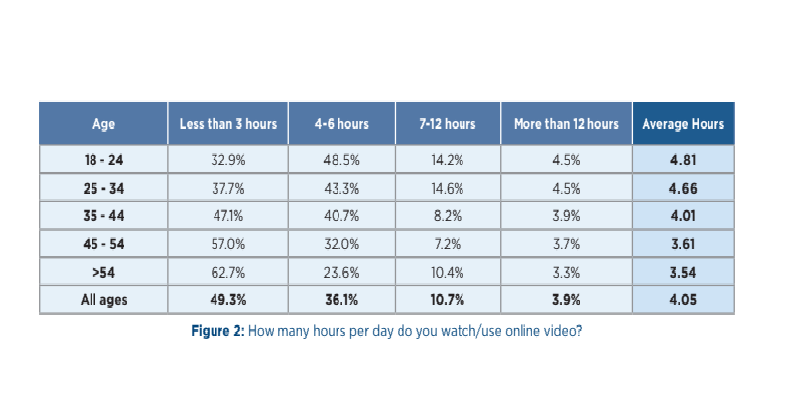
- Younger gamers have longer consecutive playing times than older gamers. However, the longest average duration is for gamers aged 18-25 which is under six hours.
- Mobile phones remain the most popular device used to play video games globally. Gaming consoles and computers have the highest usage. In India, mobile phones are the most popular device across every age group followed by computers. Gaming consoles are most popular with gamers who fall under the 26-35 age bracket .
- Globally, casual single-player games like Candy Crush, Angry Birds, and Spider Solitaire, and casual multi-player games like Words with Friends, remain the first and second most popular type of video games. These were followed by first-person shooter games and multi-player online battle arena games, and battle royale games like Fortnite and PUBG .
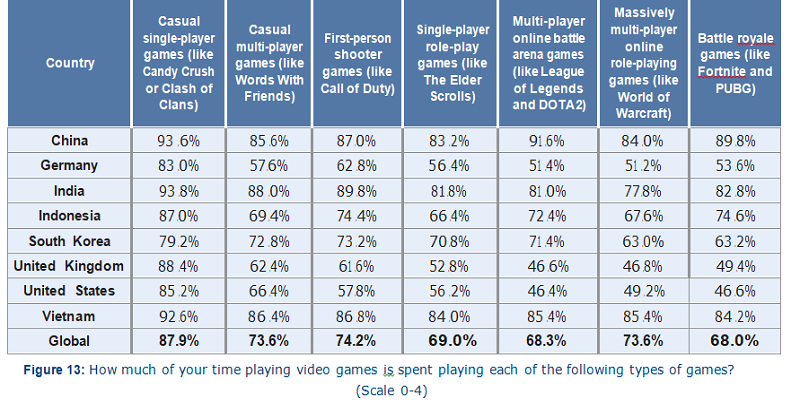
- Gamers aged 18-25 continue to prefer first-person shooter and battle royale games, and these games maintained their popularity in this age group compared to 2020. Older gamers show a clear preference for casual single-player games.
- People who play video games are watching traditional sports, both online and on traditional broadcast TV at similar hours per week. Respondents’ time spent watching video game play is up by 27 per cent compared to last year. Time spent watching traditional sports online is up by 34 per cent and watching sports on TV has increased by 30 per cent. India stands out across all these activities with over five hours per week spent on watching other people play games across aforementioned verticals.
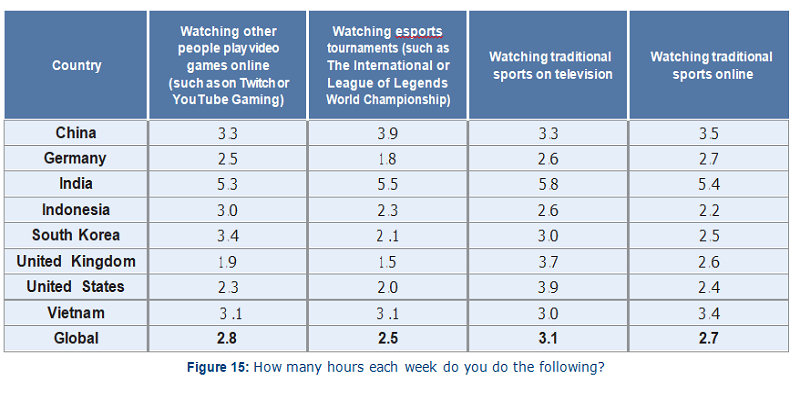
- 74 per cent gamers globally watch other people play online weekly, an increase of 11 per cent from respondents in the same countries from last year. However, viewing rates vary greatly by country, with nearly 89 per cent of gamers in China and Vietnam watching weekly, versus approximately 55 per cent in the United Kingdom and United States .
- Globally, 87 per cent of gamers find the process of downloading video games frustrating. In India, only six per cent of respondents said that the download process is not frustrating. The download process getting interrupted and having to restart the process was noted as the top issue globally, with 38 per cent noting this as their primary issue. This frustration is highest in Indonesia where 56 per cent of gamers report download interruption as their top concern. China and Vietnam also cited download interruption as their top concern. It’s not surprising that this was lower in regions with better internet connectivity.
- Updated technology and faster game play are the top reasons for upgrading game consoles. Gamers in the UK and US are least interested in upgrading their consoles, however, Indonesia and China have the highest interest to upgrade for better gameplay. Price sensitivity is the dominant reason preventing gamers globally from subscribing to a console-less service, followed by performance issues such as latency. Indonesians are most sensitive to price, and Chinese and Vietnamese respondents are more concerned about performance.
- Across all the countries surveyed, missed sleep is most pervasive, with a global average just below half of gamers. Indonesians lead the way at 57 per cent missing sleep, and 44 per cent missing showers. Skipping a meal is the second most reported daily activity missed due to long game playing, closely followed by time to socialise with friends. Gamers in Vietnam took the top spot in missing meals, to play games. South Korean respondents missed the fewest showers and meals .
- Nearly half of gamers who work, play video games during work hours. When compared with countries who consistently survey, the number of people playing video games decreased by 11 per cent compared to 2020. The highest rate is in China where 71 per cent play during work, and the lowest is in Germany at 32 per cent .
- Most gamers put themselves in the casual player category. A higher percentage of gamers in Indonesia rank themselves as aspiring professionals than any other country, yet the lowest percentages of expert and casual gamers, and the highest percentage of novices .
